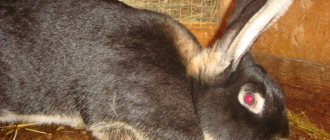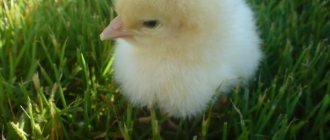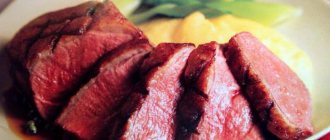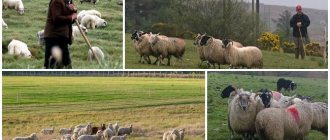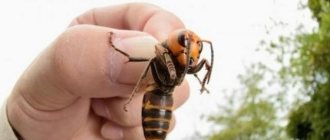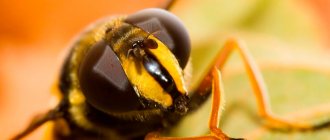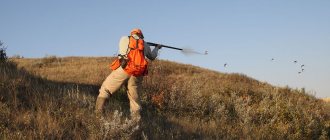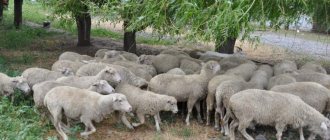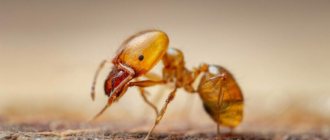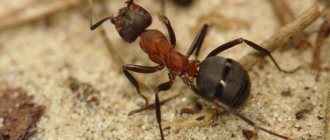Indications
Rams, like all farm animals, are castrated. There may be several reasons for this:
- The testes are necessarily removed from those lambs that cannot be used for breeding work. Intervention makes it possible to prevent the appearance of offspring from low-breed males and correct their behavior. After castration, sheep become calmer. Valukh (emasculated ram) does not show aggression, desire to clarify hierarchical relationships and establish leadership in the flock, which can significantly reduce injuries.
- In sheep, puberty occurs much earlier than the body is ready to bear healthy offspring. Keeping males and females together can lead to non-viable lambs and significant losses. Castration makes it possible to avoid such problems and simplifies the maintenance of large livestock on range and in pens.
- Castration of lambs in agriculture is also used to change the taste characteristics of meat: it does not have a pronounced unpleasant odor, is distinguished by the presence of more fat and less fiber.
- The absence of gonads has a positive effect on the quality and volume of wool obtained from rams. During slaughter, the skin of such animals is removed much easier and without damage.
- Much less often, castration of sheep is carried out for medical reasons: in case of injury to the genital organs or the detection of certain pathologies.
Castration of rams performed at the optimal time eliminates many of the problems of keeping sheep and significantly increases the profitability of the farm.
Contraindications
When selecting lambs for castration, both indications and contraindications should be taken into account. Intervention at too early an age is not recommended due to possible delays in the growth and development of the animal. Castration of lambs is not carried out 10 days before scheduled vaccination and for 2 weeks after it.
1-2 days before the planned intervention, all sheep are carefully examined: the temperature is measured, the position of the testes and their condition are determined. Do not operate on weakened, emaciated or sick individuals. Intervention is not recommended if the lambs go to slaughter after reaching 5-6 months.
Surgery in adulthood is associated with a high likelihood of postoperative complications and the need for subsequent long-term treatment.
Features of the anatomical structure of the gonads
The shape of the testes is oval, in young ones it is more elongated, and with maturity it becomes rounder.
The sizes have a strong age dependence - during the period of mass castration (2-5 months) they usually do not exceed a chicken egg. The body of the testis consists of parenchymal tissue, separated by stroma, and connective tissue. A distinctive feature of rams is the weak development of stroma and the prevalence of parenchyma, which makes the testes less dense and durable. The seminal appendage is represented by a network of convoluted vas deferens, forming a dense formation. It has separate nutrition due to the vessels of the vas deferens, which is separated from the umbilical branch.
The scrotum is a large skin sac that contains the gonads of the sheep. A specific feature is the low descent of the testes and the formation of a scrotal neck. Layers and shells:
- leather. Relatively thin in young rams, covered with small hair, containing fat and sweat glands, divided by a median suture;
- The muscular layer is a durable membrane connected to the skin and forming separate cavities for each testis. In old rams it contains developed fatty tissue;
- common tunica vaginalis - a layer formed by protrusion of the inner part of the abdominal wall when the testis descends;
- special vaginal membrane - covers the gonads along with the appendage.
Age
Puberty in lambs occurs on average at 6 months. In some early maturing breeds, signs of puberty may be observed even earlier. The optimal period for removing the testes occurs 3-4 weeks before the completion of the development of the genitourinary system. The minimum acceptable age for castration of lambs is 3-4 months. Intervention carried out earlier than the specified period can cause significant disturbances in metabolic processes and cause growth retardation in comparison with sheep not subjected to intervention. If rams are castrated after maturity, behavioral sexual responses may persist for some time.
Adult males that have become unsuitable for breeding work are operated on several months before slaughter, during which the male is fattened and the meat loses its specific smell.
To prevent possible complications, mass castration on farms is recommended to be carried out in the autumn or spring months. Low air temperature and the absence of insects carrying pathogens reduces the likelihood of bleeding, inflammatory processes and other pathological conditions.
Methods
Castration of lambs and adult males is carried out using several methods. At a young age, preference is given to percutaneous methods; at a more mature age, open surgery is used.
Open way
Open operations involve making transverse incisions in the lower part of the scrotum or cutting off its bottom. Due to the low prolapse of the scrotum and sclerosis of the skin during castration of rams, longitudinal incisions are not recommended. In this case, there is a high probability of accumulation of blood clots in the cavity with the subsequent development of infectious inflammation.
Before making the incisions, anesthesia is drawn into a syringe and injected in several places of the surgical field. If it is necessary to castrate old rams, the concentration is increased.
The testicles are removed through the incisions, the spermatic cords are tied with a ligature or pinched with forceps, and the resulting wound is covered with an antiseptic. For large wound surfaces in adult sheep, it is recommended to insert a piece of gauze soaked in iodoform or antibiotics into the cavity.
In a closed way
In most cases, bloodless castration is used to castrate lambs or young rams. To carry out such procedures you will need a special tool.
Bloodless methods include:
- Compression of the scrotal neck (elastration).
The essence of the intervention is to put an elastic band on the scrotum of lambs as close to the abdomen as possible. As a result, blood access to the testicles is stopped, they gradually decrease in size and die. In lambs and young rams, this process takes 2 to 3 weeks. To carry out the procedure in a closed way, an elastrator is used. It is used to stretch tight rubber rings into which the scrotum is threaded.
It is not recommended to castrate adult rams using this method, since due to the large amount of connective tissue, the neck is not compressed tightly enough with an elastic band. The difficulty lies in the fact that after reaching 6-7 months, the testes of rams increase in size so much that it is quite problematic to pass them through the ring.
This method is considered the most gentle, since the rubber rings cut off the blood supply to the nerves, and after 20-30 minutes the lambs stop feeling discomfort.
- Crushing of the spermatic cord.
This method is also only suitable for lambs or young rams. To destroy the vas deferens of sheep you will need special forceps. The duration of its retention on the cord and the possible need for repeated use depend on the model of the instrument.
To carry out the procedure, the rams are placed on their backs and the testicles are retracted to the bottom of the scrotum. The forceps are applied to the cord as close to the testis as possible and sharply squeezed until it crunches. After 3-4 weeks the rams are examined. If the testicles have not decreased in size, repeated intervention will be required, but in an open way. With successful intervention, complete death of the testicles occurs within 5-6 months.
- Crushing of the testicular parenchyma.
The most suitable method for sheep, which, however, is not widely used due to the painfulness of the procedure and the high probability of restoration of the testes. The method involves destroying the testicles by squeezing them between the rounded jaws of the forceps. The tool is selected depending on the age of the lambs, since the size of the testicles increases noticeably over time. After squeezing, the tissue should be loose without compaction.
Before castrating sheep, it is necessary to weigh the advantages and disadvantages of each method, and choose the one that will have the least negative health consequences.
Castration of sheep
Studying the issue of castration of rams should begin by answering several important questions: why is this procedure necessary at all (perhaps specifically in your case it will be unnecessary), at what age is it best to castrate animals and what structural features of their reproductive system need to be taken into account. In addition, it is worth considering different ways to complete the task, choosing the most optimal option for yourself.
Why do you need to castrate sheep: indications and contraindications
Castration is a surgical intervention to stop the functions of the reproductive glands of an animal, in this case a ram. Most often, such an operation is resorted to to improve the fattening process of young animals, reduce the aggressiveness of males and their general activity. In addition, the resulting meat product loses its unpleasant odor, which in some cases is considered a very strong argument in favor of castration.
No matter how a person interferes with the natural reproductive processes in an animal’s body (blood or bloodless), as a result he gets a ram that is unsuitable for further breeding work.
Did you know? Sheep have excellent memory and remember their shepherd well. After several flocks mix (for example, at a watering hole), each animal unerringly finds “its” person and follows him.
Age at which castration must be performed
The optimal age of a ram for castration depends on the chosen method of performing the procedure. Thus, surgical procedures are best performed when the animal reaches 2 or 4 weeks, since at a later date the testes become much larger and more difficult to work with. In addition, the active development of the connective membrane, which complicates the process of clamping the spermatic arteries, becomes a problem.
Without incision of the vaginal layer, animals are usually castrated between 2 and 6 months of age, and partial castration (the rarest type) is used for young animals of 2 or 3 months of age
The structure of the ram's reproductive system
Without knowledge of sheep anatomy, you should not consider the possibility of self-castration of rams, since there is a high probability of serious damage to the animal’s organs and their further rapid death.
Males are characterized by oval testes, which in lambs have a more elongated shape, and with age they acquire the outline of an almost perfect circle. From 2 to 5 months of life, their size is no more than the size of a chicken egg, and the body of the testis is formed by connective and parenchymal tissue layers. A special characteristic of rams is the weak expression of the stroma, with a clearly visible parenchymal part, which makes the testes less dense.
Did you know? Sheep of the Urial breed are characterized by a minimum lifespan (no more than 6 years), but the longest-livers among these animals are considered to be snow sheep, whose age when bred at home can reach 24 years.
The seminal appendages are a network of convoluted vas deferens that form a dense region. Its nutrition is largely due to the seminal vessels separated from the umbilical zone. The scrotum is presented in the form of a large skin sac with the gonads of the animal inside. The specific feature of these organs is the low location of the testes and the formation of the cervical zone of the scrotum.
The genital organs of the ram: 1. Bulbous glands, 1-3 cm in size, oval in shape; 2. Retractor muscle (retractor); 3. S-shaped bend of the urogenital canal; 4. Scrotum; 5. Testis with appendage: the testis is ellipsoidal, dimensions in adult males are 10-11 cm long, 6 cm thick, weight 250-300 g. The testicular appendage is adjacent to the posterior edge of the testis. The head is located on the upper part of the testis, the body is located on the back part, and the tail is located on the lower part of the testis; 6. Prepuce 7. Penis with a process of the urogenital canal, which reaches a length of 3-4 cm and plays a role in spraying sperm. The total length of the penis during erection reaches 0.5 m; 8. Spermatic cord; 9. Sperm duct; 10. Kidney; 11. Ureter; 12. Rectum; 13. Bladder
The skin of the genital organs and its layers in young rams is relatively thin and densely covered with short hairs. Fatty and sweat glands pass through the thickness of the skin, separated by a middle suture. The muscle layer is represented by a durable membrane connected to the skin and forming separate areas for each testis. In old rams, this part contains a well-developed subcutaneous layer of fat.
The common tunica vaginalis is the layer that was formed by the protrusion of the inner part of the abdominal wall when the testis descended. In contrast, a special vaginal membrane passes along the surface of the gonads along with the appendage.
Also find out the best way to render lamb fat at home.
Complexity of the operation
Routine castration of rams is somewhat different from removal of testicles in other types of farm and domestic animals. This is due to the drooping of the scrotum, the large size of the testes in sheep and the presence of connective tissue around the vas deferens and testicular parenchyma.
The simplest procedures include elastrating sheep with rubber rings and crushing the spermatic cord without opening the scrotum. The most difficult is considered to be the defertility of adult rams over 4-5 years old and the castration of males for medical reasons.
Possible complications
Most often, negative consequences occur after open surgery. In this case, rams experience prolapse of the intestinal loop. Prolapse of the spermatic cord is also possible. If such complications are eliminated in time, they will not affect the outcome of the operation.
More dangerous consequences include bleeding. In such a situation, repeated stitching may be necessary. Late complications include the accumulation of clotted blood and infection in the body. If the animal is not helped in time, there is a risk of gangrene, sepsis and death of the pet. Sheep castration can be carried out in various ways. For the procedure to be successful, it is important to choose the right method of surgical intervention and strictly adhere to all rules and instructions.
How long does the intervention last?
The duration of castration depends on many factors: the chosen method, the age of the sheep, the need for preliminary anesthesia, the presence of diseases of the reproductive organs and the likelihood of unforeseen situations during the intervention. The operating time also depends on the practical experience of the person performing the procedure.
On average, castration of lambs using bloodless methods takes 5-10 minutes, and open surgery with removal of the testicles takes 20 to 30 minutes. Only a specialist can determine more accurately how long the intervention lasts.
Postoperative period
All sheep subjected to the procedure are placed in pre-prepared, clean and dry pens. Animals are examined daily until the testicles completely atrophy or postoperative wounds heal.
The most careful care after intervention is required for rams with open wound surfaces. Males may require additional treatment with an antiseptic, and in case of bloody discharge, mucus or pus, special treatment.
More detailed recommendations regarding care and feeding in the preoperative and postoperative periods will be given by the veterinarian, depending on the age and the chosen method of castration of lambs or rams.
Laying out males using a scalpel
Very often, veterinarians act the old fashioned way - they perform an operation on a ram that has reached six months, only by treating the skin with alcohol before cutting it. Few people think about doing anything to relieve the pain of the procedure.
But nevertheless, some people still believe that since animals are under the power of man and serve him, even as food, then he is simply obliged to reduce their suffering as much as possible. Therefore, shortened castration was invented not so long ago.
This procedure differs from the traditional method of surgery in that during it only the male’s scrotum is removed. The ram's testicles themselves remain intact, but are pushed up. Due to this, the male, although he produces testosterone, is not able to fertilize the sheep.
And finally, everyone knows about castration itself, during which the ram’s scrotum is cut, the testicles are released and removed. As a result of the operation, an open wound is left, which can become infected from the outside with dust, dirt, flies and other insects.
A person who decides to engage in cattle breeding should know more about his business. And that’s why it’s so important to keep abreast of all the innovations that scientists and veterinarians offer sheep farmers.

